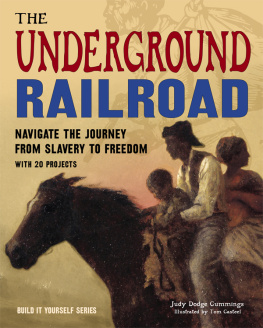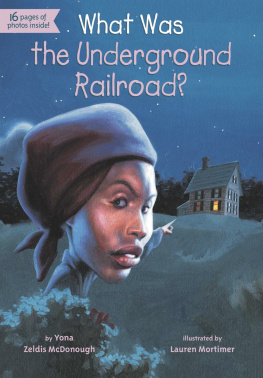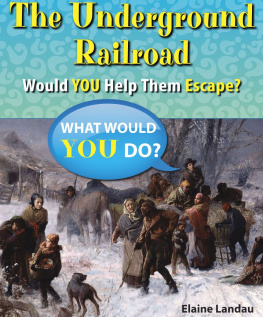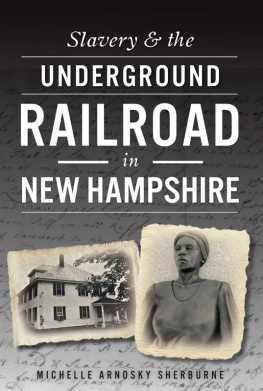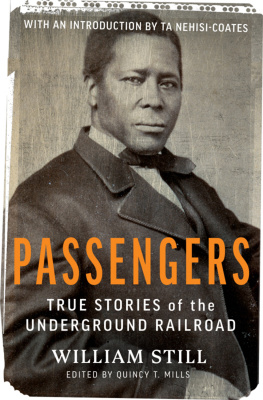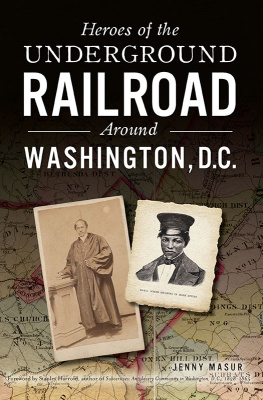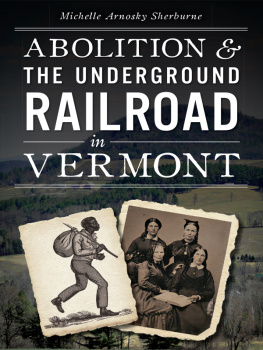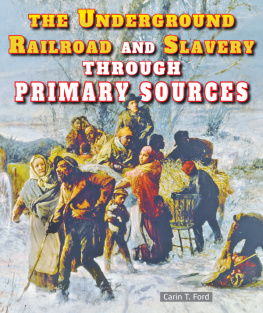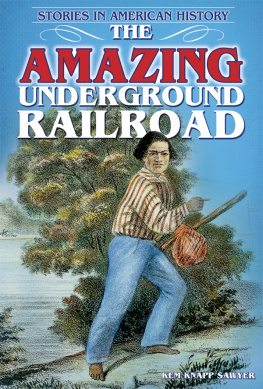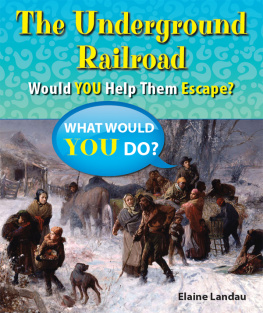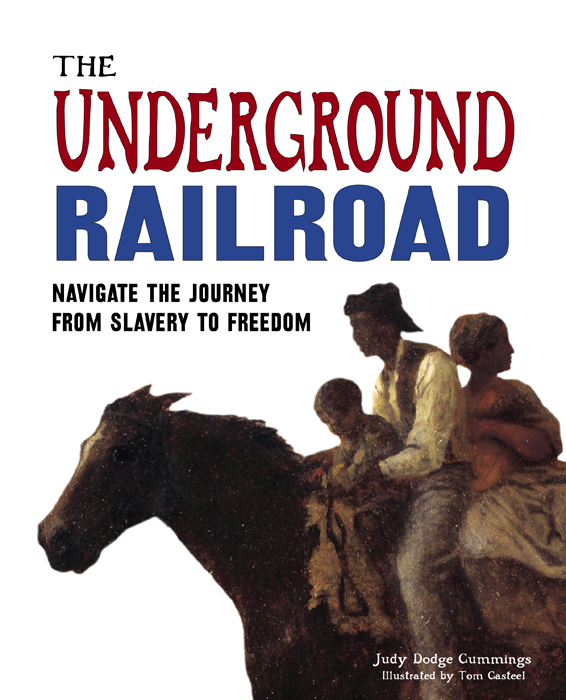
~ More American history titles in the Build It Yourself series ~

Check out more titles at www.nomadpress.net
Nomad Press
A division of Nomad Communications
10 9 8 7 6 5 4 3 2 1
Copyright 2017 by Nomad Press. All rights reserved.
No part of this book may be reproduced in any form without permission in writing from the publisher, except by a reviewer who may quote brief passages in a review or for limited educational use. The trademark Nomad Press and the Nomad Press logo are trademarks of Nomad Communications, Inc.
Educational Consultant, Marla Conn
Questions regarding the ordering of this book should be addressed to
Nomad Press
2456 Christian St.
White River Junction, VT 05001
www.nomadpress.net
1442: The Portuguese bring 10 captives from Africa to Europe, beginning the transatlantic slave trade.
1619: The first African slaves arrive in the North American colonies.
1775: The first organization to aid fugitive slaves is formed in Philadelphia, Pennsylvania.
1777: Vermont is the first state to ban slavery.
1780: Pennsylvania becomes the first state to pass a gradual emancipation law.
1787: Slavery is protected within the United States Constitution.
1793: Congress passes the first federal Fugitive Slave Law, making it illegal to aid slaves fleeing from slavery.
1808: The international slave trade is outlawed, but this causes the American domestic slave trade to grow.
1816: The American Colonization Society is founded with the goal of resettling former slaves in either Africa or Latin America.
1822: John Rankin moves from Kentucky to Ripley, Ohio, and enlarges Underground Railroad operations already in existence there.
1826: Levi Coffin moves to Fountain City, Indiana, and establishes a station on the Underground Railroad that will become one of the most important in the nation.
1831: Nat Turner leads a slave revolt in Virginia during which 60 white people are massacred, leading to harsh reprisals against all black people.
1831: Editor William Lloyd Garrison calls for immediate emancipation in the first issue of The Liberator.
1833: England outlaws slavery in its colonies, including Canada.
1833: The American Anti-Slavery Society is formed in Philadelphia.
1835: The New York Committee of Vigilance is formed in Manhattan and becomes a model used by other Underground Railroad organizers.
1838: Eliza, the woman who is the model for a character in Uncle Toms Cabin, escapes to freedom through the Underground Railroad in Ripley, Ohio.
1838: Frederick Bailey escapes from slavery in Maryland and changes his name to Frederick Douglass.
1845: Captain Jonathan Walker is arrested for aiding fugitive slaves in Florida and his hand is branded.
1849: Harriet Tubman escapes from slavery in Maryland.
1849: The Reverend William King founds a settlement for blacks in Buxton, Ontario.
1851: The Christiana Riot in Lancaster County, Pennsylvania, prevents slave catchers from capturing fugitives and results in the death of slaveholder Edward Gorsuch.
1854: The Kansas-Nebraska Act is passed, allowing western territories to vote on whether they want to be free states or slave states. This leads to a mini civil war in Kansas.
1859: John Brown tries to launch a slave revolt at Harpers Ferry, Virginia, but is captured, tried, and executed.
1861: Eleven slave states secede from the United States, forming their own country called the Confederate States of America. This leads to the Civil War between the Confederacy of the South and the Union of the North, which lasts until 1865.
1865: The Civil War ends and the 13th Amendment to the Constitution is ratified, which abolishes slavery in the United States forever.
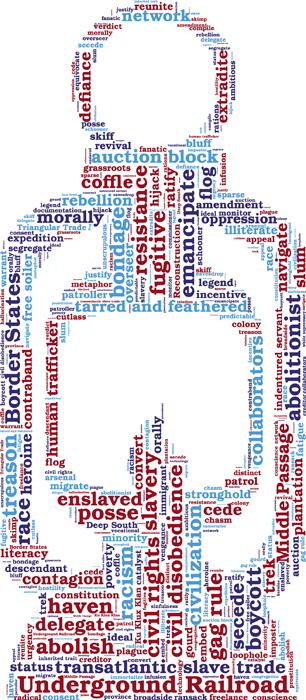
Can you keep a secret? What if it was a secret you could never tell because it was a matter of life and death? There was a secret in history that few people knew. Knowledge of this information was once so dangerous, so deadly, that only the strongest, bravest, and most reliable people could be trusted as secret keepers. Could you carry that kind of burden?
For more than two centuries in the United States, slavery was the law of the land. People could be bought and sold the way someone today might buy a house or a car or a cow. They were forced to work under brutal conditions for long hours and no pay. Who were these people? They were Africans who had been kidnapped from their homeland, transported to America, and sold on the auction block.
Decade after decade, slavery grew in the United States. By 1860, there were 4 million African Americans living in bondage in the United States.
WORDS TO KNOW
auction: a public sale of property to the highest bidder.
auction block: the platform from which an auctioneer sells goods to a crowd of buyers.
bondage: another word for slavery.
enslave: to make someone a slave.
fugitive: someone who runs away to avoid being captured.
abolitionist: someone who believed that slavery should be abolished, or ended.
abolish: to completely do away with something.
Underground Railroad: a system of cooperation among people who believed slavery was wrong that secretly helped fugitive slaves reach the Northern states and Canada.
Deep South: a region of the Southeastern United States that includes the states of Alabama, Georgia, Louisiana, Mississippi, North Carolina, and South Carolina.
legend: a story from the past that cannot be proved true.
network: a group of people who work together for a common cause.
Slaves had no rights. They could not go to school. Their owners could legally beat them for any reason or for no reason at all. Worst of all, families were often separated when fathers, mothers, or children were sold off, never to be seen again.
For many years, American society resisted granting slaves their freedom. During this time, some enslaved people ran away from their owners. Many of these fugitives were caught and returned to their owners and severely punished. However, some escaped and reached a free land. This is the secret part.
THE BEST-KEPT SEC RET OF THE NINETEENTH CENTURY
A small group of free people called abolitionists hated slavery almost as much as the slaves did. They wanted to abolish slavery. Until that could happen, they created a crafty system called the Underground Railroad to help slaves escape. What the railroad was, how it worked, and who operated it was the best-kept secret of the nineteenth century.
When you read the phrase Underground Railroad , what do you imagine? Dark tunnels deep in the center of the earth? A train careening at top speed, its headlight illuminating the rocky belly of a mountain? Haunted faces peering out train windows?
DID YOU KNOW?
Historians believe that about 100,000 people escaped from slavery on the Underground Railroad.
That is a dramatic picture, but its also a false one. The Underground Railroad was not underground and it was not a train. It was a process. Slaves ran away from their owners, most by fleeing north to free states or to Canada.
Free people, both black and white, helped the runaways by guiding them, hiding them, transporting them, and sometimes fighting for them. Because it was against the law to aid fugitives, sheriffs and slave catchers prowled back roads and city streets searching for runaways. Slaves who were caught were physically punished and brought back to the Deep South . Their helpers could be heavily fined and imprisoned.
Next page
